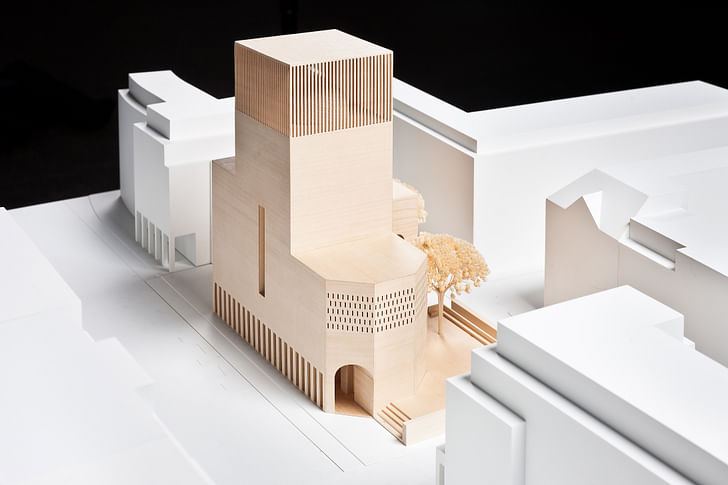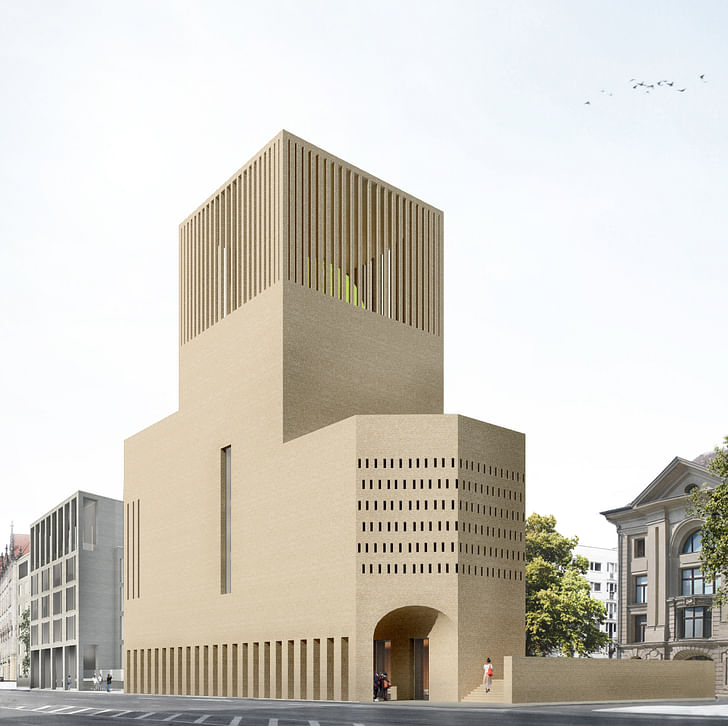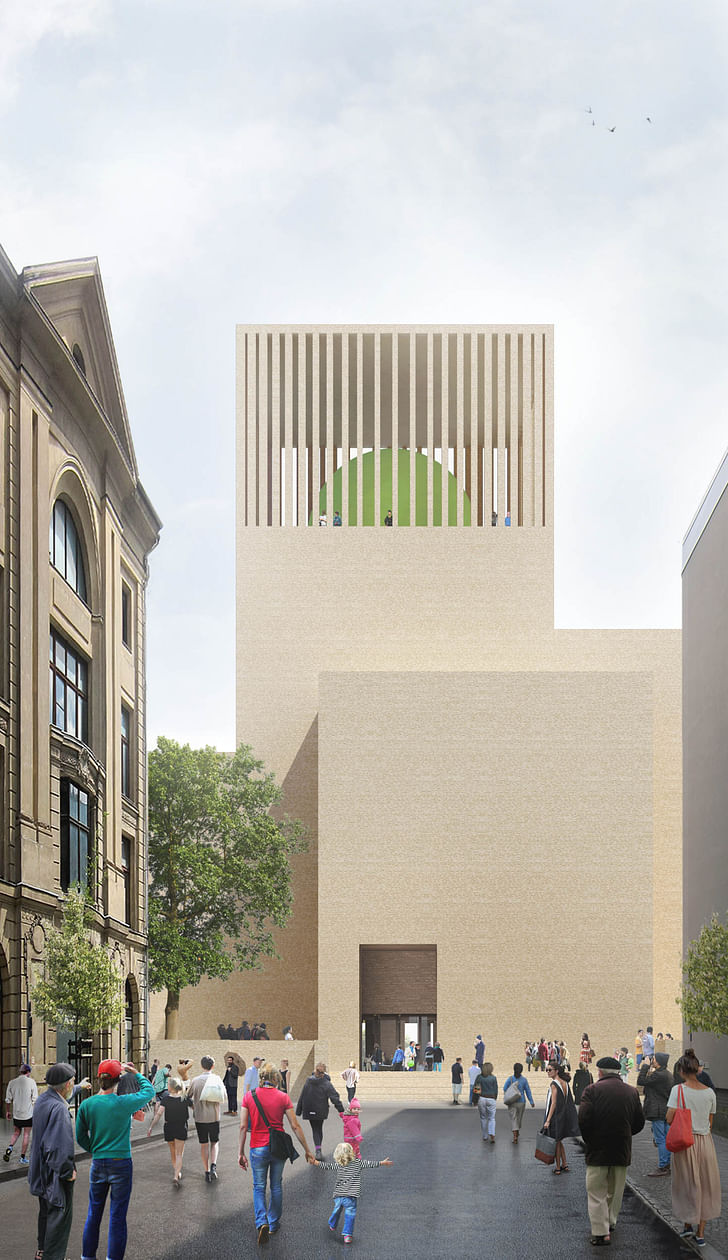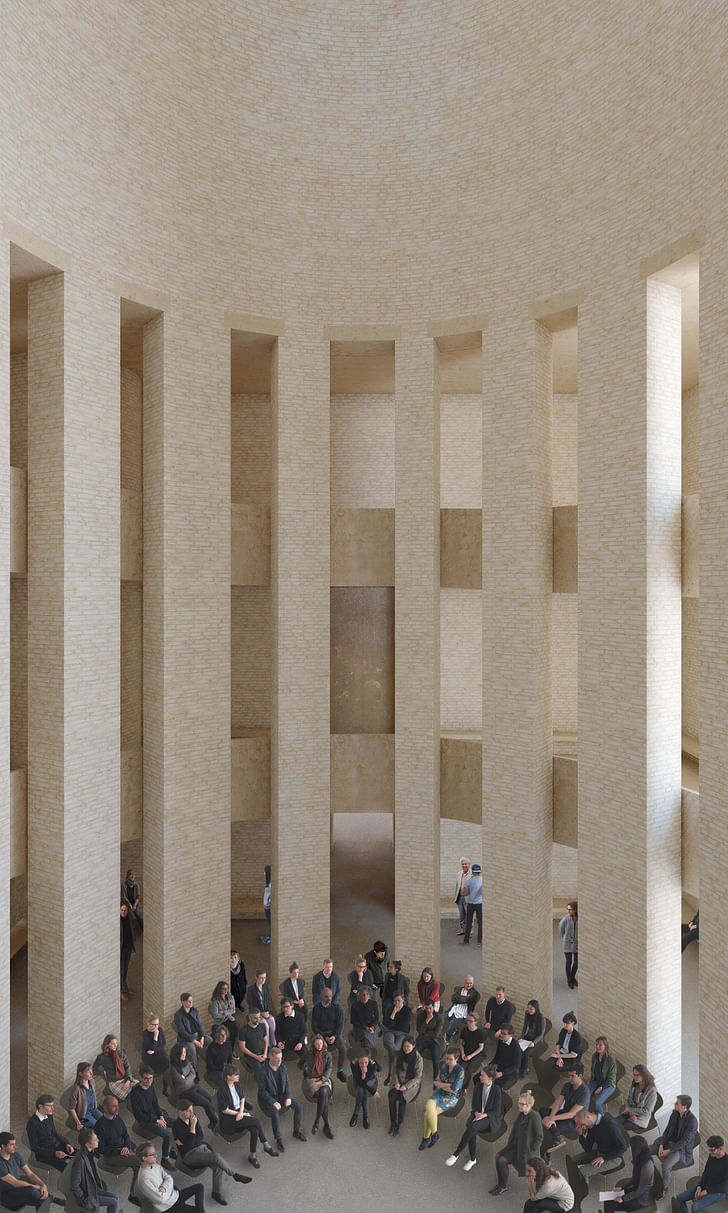

From the Mosque–Cathedral of Córdoba to the Hagia Sophia, there are many spaces that have, at one time or another, served different religions. But, by and large, each religion has a monopoly on the space at a given time. Few religious spaces are truly shared between different faiths, even if they have competing claims to the site. But with the House of One, a worship space designed for the historic Petriplatz in Berlin, a single site will be shared by the Jewish, Christian and Muslim communities. We got in touch with the architects, Kuehn Malvezzi, to hear more about the project.
What was the initial impetus for the project?
The project started with the question about the future use of the historical Petriplatz in Berlin. Located at the very center of Berlin, close to the Museum Island, Petriplatz is one of the foundational sites of the city. It has been used as a place for religious worship since the early Middle Ages, a number of churches having been built there consecutively. The last one, dating back to 1853, was damaged during WWII and demolished in the 1960s. Petriplatz has been used as a place for religious worship since the early Middle AgesArchaeological excavations carried out between 2006 and 2009 unearthed the foundations of the previous three churches. Asked if they wanted to resume use of the site, the Christian congregation chose a different approach instead. Together with both a Jewish and a Muslim community they established the project of a House of Prayer and Learning for all three Abrahamic faiths and started an international architecture competition. Our office won this competition at the end of 2012 and started working on the design of the building, now called The House of One.


What are some of the major challenges in design a space for multiple religions?
Designing the House of One is a unique task as there is no typological model. We aspire to develop the design as an intimate and significant expression of the content itself, thus involving the future users intensely in the design process of this novel building typology.
The building epitomizes the relationship between the three religionsThe building epitomizes the relationship between the three religions which can be described as a simultaneity of intimacy and foreignness in a spatial constellation. Each faith will have their own sacred space as a dedicated house of prayer, specific to their respective liturgies. All three sacred spaces are located on the same floor around a shared central hall that serves both as circulation space and as a house of learning. This hall connects the prayer rooms while also providing the necessary space in-between, acting as a place of public encounter, much like an urban square surrounded by different buildings.
The site significantly informed the design. The House of One transforms the Petriplatz by adding to its history in a very literal sense rather than turning it into a museum: not only metaphorically will the building be built on the foundations of the previous churches, but it will physically rise from the exisiting historical foundations of the last Petriplatz church. An entirely new structure will be built above the existing foundations. The archeological site will be visible and accessible in the basement of the building.


Were there certain design elements that were required by a faith? Did any contradict each other?
There were specific design elements required by each faith. Still, they don’t contradict each other at all, as each faith has their proper sacred space. Light is a very important element for all of the three religions involved. The interplay between fair-faced brickwork and daylight forms the building material of the House of One. Each of the sacral spaces is characterized by its distinct illuminating perforation of the brick wall. These openings inform each of the spaces in a particular way while creating a number of different facades. Light is a very important element for all of the three religions involvedThe synagogue is characterized by many small openings which produce a steady diffuse light around the central liturgical object, the Bima. In contrast, the light situation in the mosque changes during the course of the day by way of narrow vertical openings. The church is lit by a large skylight while the central domed hall receives zenithal light at its cusp. At this point, we look forward to developing the design further in detail, giving shape to the liturgical spaces and objects.
What’s the current status of the project?
The preliminary draft of the House of One has been completed. Since August 2016 the House of One is being recognized by the Federal Government as a ‘National Project of Urban Design’ and thus will receive a federal subsidy which will allow the project to proceed in terms of design development. Construction is set to commence in 2019.


This feature is part of Archinect's December theme Faith.
Check out the image gallery for plans.
Writer and fake architect, among other feints. Principal at Adjustments Agency. Co-founder of Encyclopedia Inc. Get in touch: nicholas@archinect.com
5 Comments
Great timing!
@randomized how/why!?
Oh just because of the terrorist attack this week in Berlin by a Muslim at a Christmas market. Don't you see the irony in that? Just look at the tags under the article. As if that would help, a House of One for all the monotheistic religions to come together in peace and love and happiness or something, while we could actually really use Houses of None!
very beautiful building...
The concept is a hopeful one. Just demonstrating that there are spaces designed for different liturgical requirements but upon wandering through, one may notice that they do not differ so much. They share scale, size, materials, foundations, enclosing walls, the same source of light, moving relative to each equally. It's great.
Block this user
Are you sure you want to block this user and hide all related comments throughout the site?
Archinect
This is your first comment on Archinect. Your comment will be visible once approved.